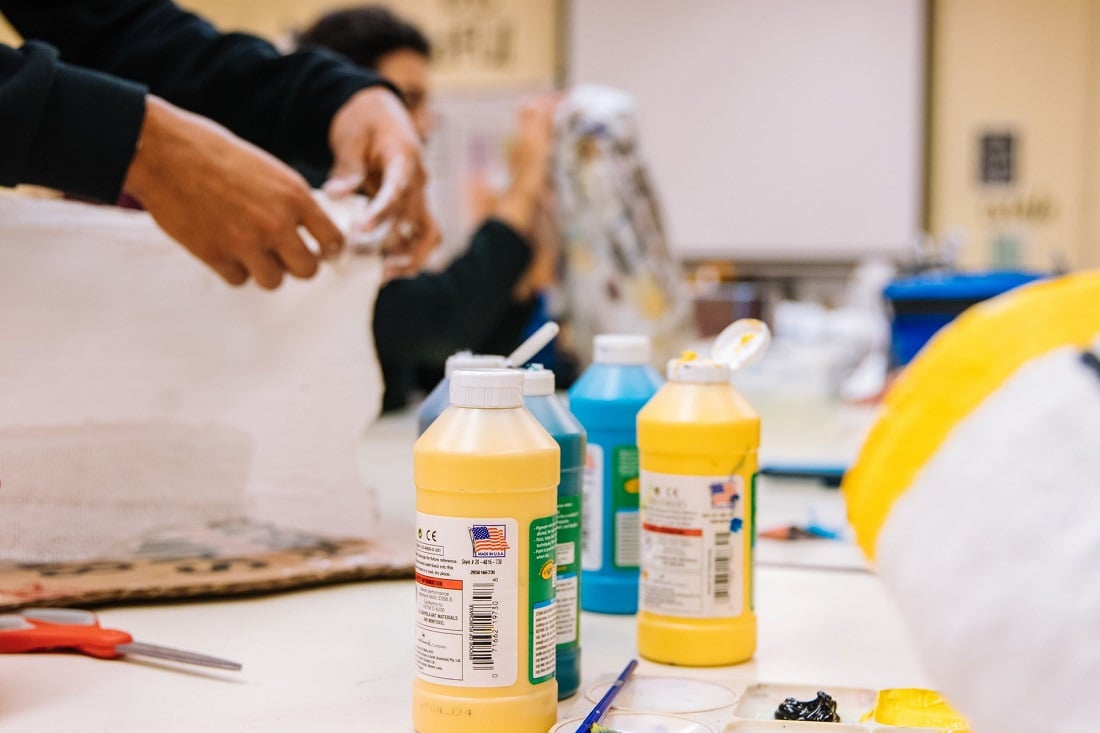
Photo: Jeswin Thomas on Unsplash
Culture on referral: tackling the elephants in the room
Would we still see the same benefits to wellbeing if we took art and culture out of ‘culture on referral’ programmes and sat people in a room together? Dr Robyn Dowlen uncovers gaps in the evidence base.
At the Centre for Cultural Value we are developing an independent and robust research and evidence base which outlines the impacts of arts, cultural, heritage and screen-based experiences on people’s lives and on society. We are identifying and evaluating existing research within specific topic areas and summarising key findings in a series of research digests.
Positive impacts on wellbeing
Our first research digest focuses on Culture on Referral, also known as arts and culture on prescription. This research has identified and evaluated peer-reviewed literature relating to culture on referral programmes published since 2010, aiming to understand how these programmes might contribute to improved health and/or wellbeing outcomes.
Across the 13 studies we identified, positive and meaningful changes in wellbeing were reported by those taking part in culture on referral programmes. In studies using qualitative methods participants reported they felt more confident, that their self-esteem had improved, and that they felt happier, calmer and more relaxed. They also reported feeling less socially isolated and lonely. The opportunity to gain peer support from others experiencing similar challenges relating to mental health and wellbeing was also seen as valuable, and we found numerous reports of new friendships developing through the programmes.
Elephants in the room?
But although there is evidence to support the idea that culture on referral programmes have positive and meaningful impacts on participants’ wellbeing, there are some significant gaps in understanding relating to these programmes and their impacts on wellbeing.
Firstly, we need to be able to understand what it is about cultural experiences that leads to the positive impacts and outcomes that we are observing. The reason we don’t know this at the moment is because all of the cultural experiences were group-based and there was very little detail, and often poor description, of the cultural experiences themselves. Looking forward, we need to disentangle the value of the cultural experience itself from the wider social benefits of group-based interaction. Would we still see the same benefits to wellbeing if we took art and culture out of the equation and sat people in a room together? This may seem like an instrumental stance to take, but without exploring and evaluating the cultural experiences that people take part in we are missing quite a substantial part of the picture.
Secondly, we noted that many of the participants who took part in culture on referral programmes shared similar demographic characteristics, with many participants self-identifying as female, white and aged 50+. This raises questions about whether there is a lack of diversity in those who take part in programmes; whether there are any barriers to inclusion in both programmes and in the research itself; and whether adaptations to programmes are necessary to ensure better equity in access to a wider range of participants who have health and wellbeing needs. These questions cannot be answered from the data available in published studies, which points to a gap in our understanding and should be an essential consideration in future research and practice.
Finally, there is limited exploration of the longitudinal impacts of taking part in culture on referral programmes. Under the umbrella of social prescribing, these programmes more generally have a shared aim to create greater connections between people and community to address longer-term health and wellbeing needs. Because many of the studies reported findings within the boundaries of a 10-week programme, we don’t have a clear indication as to whether taking part produces any longer-term benefits. We did find emerging evidence of ‘ripple effects’ beyond the programmes themselves, with people enrolling in further educational opportunities, establishing their own visual arts groups and engaging with creative activities within their own homes. But without longitudinal examination of the lasting value of such programmes, we still don’t know whether taking part leads to fewer GP visits or participants feeling more connected to their communities, for example.
The take home messages
While all the studies we examined highlighted positive impacts relating to wellbeing, there is still a way to go before we can confirm that there is strong evidence that cultural experiences themselves make the difference in this context. We know there are many cultural organisations who have developed culture on referral programmes that are making differences in the lives of those who take part, and our research findings should not detract from this. But we do need to consider how we can strengthen research in this area to be able to offer a more holistic account of the value of these programmes. More generally, if we are to build a shared understanding of the real health and wellbeing benefits of culture on referral programmes, and develop a solid evidence base, we must focus much more on rigorous research and less on advocacy.
Looking ahead, we anticipate that there will be new research in this area, seeking to examine the translation of culture on referral programmes using online delivery. We have seen many examples of programmes adapting to the digital space and will be updating this review next summer in order to take into consideration any new research that has been published in light of the Covid-19 crisis.
Dr Robyn Dowlen is a Postdoctoral Research Associate at the Centre for Cultural Value
This article, sponsored and contributed by the Centre for Cultural Value, is part of a series supporting an evidence-based approach to examining the impacts of arts, culture and heritage on people and society.
Join the Discussion
You must be logged in to post a comment.